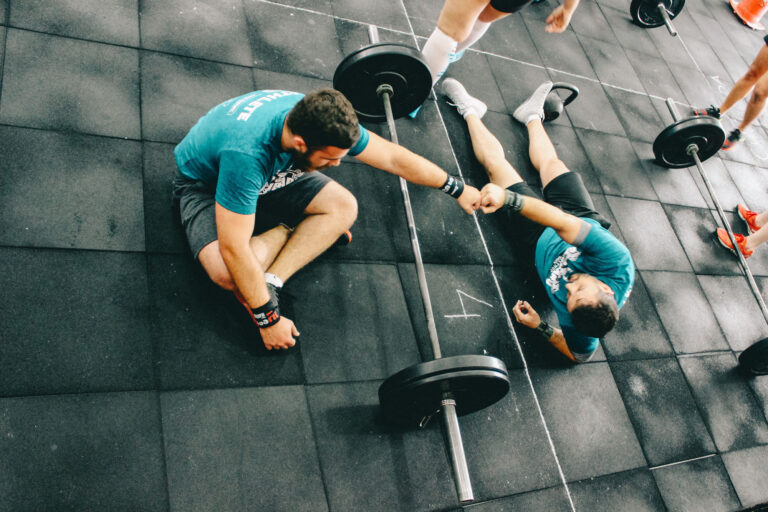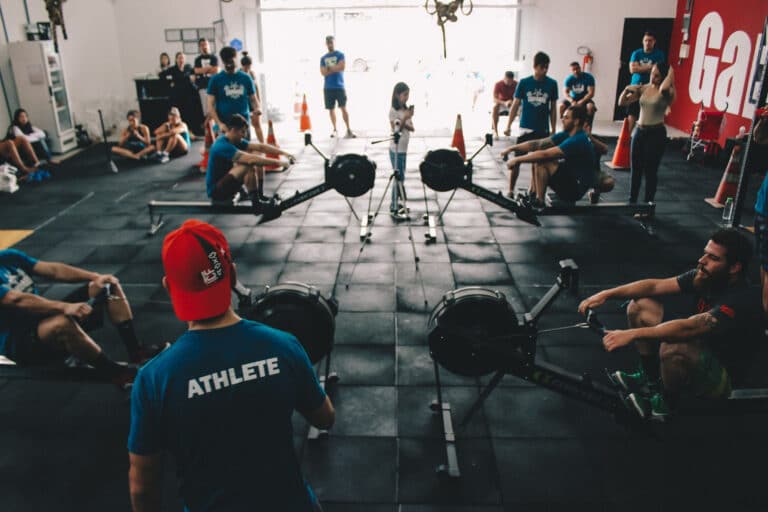Understanding Bro-Science
In the realm of fitness and athletics, there is a persistent clash between anecdotal wisdom, often referred to as “bro-science,” and evidence-based practices grounded in scientific research. This conflict can lead to confusion and misinformation, with many athletes and fitness enthusiasts unsure of which advice to follow. In this article, we will explore the differences between bro-science and science-based athletics, debunk common bro-science myths, and offer guidance on how to discern fact from fiction.
Definition and Origins
Bro-science is a colloquial term that refers to information, advice, and training practices in the fitness world that are based on personal experience, anecdotal evidence, or hearsay rather than empirical research (Schoenfeld, 2016). This “knowledge” is often passed down through generations of gym-goers and is perpetuated by influential figures in the fitness industry who may not have a strong scientific background or understanding of the underlying principles. Despite the lack of scientific backing, bro-science continues to thrive due to its simplicity, relatability, and the allure of quick results.
Why Bro-Science Persists
Bro-science persists for several reasons:
- Accessibility: Bro-science is often more accessible than scientific research, as it is spread through casual conversation, social media, and online forums (Schoenfeld, 2016). This makes it more likely for individuals to encounter and adopt these beliefs.
- Confirmation bias: People are more likely to believe information that aligns with their pre-existing beliefs or supports their desired outcome (Nickerson, 1998). This can lead to the uncritical acceptance of bro-science, especially when it promises faster or easier results.
- Appeal to authority: Many fitness enthusiasts look up to influential figures who may promote bro-science, often perceiving their success as evidence that these methods work (Calder, 2016).
- Lack of scientific literacy: A general lack of understanding of scientific research methods and statistical analysis can make it difficult for people to critically evaluate the evidence supporting various fitness claims (Schoenfeld, 2016).
Debunking Common Bro-Science Myths
You Must Eat Every 2-3 Hours to Boost Metabolism
Bro-science often advocates for frequent small meals throughout the day to keep the metabolism high and promote weight loss or muscle gain. However, research shows that meal frequency has little to no impact on metabolism or body composition (Schoenfeld et al., 2015). What matters most is the total daily caloric intake and macronutrient distribution.
Myth: More Protein Equals More Muscle
While protein is essential for muscle growth and repair, consuming excessive amounts will not lead to additional muscle gains. Studies show that consuming more than 1.6 grams of protein per kilogram of body weight per day does not provide additional benefits for muscle growth (Morton et al., 2018). Beyond this threshold, the excess protein will be used for energy or stored as fat.
Myth: You Must Confuse Your Muscles to Keep Growing
The idea of “muscle confusion” suggests that constantly changing exercises and routines is necessary to prevent plateaus in muscle growth. However, research indicates that consistent progressive overload – increasing the demands placed on the muscles over time – is the primary driver of muscle growth (Schoenfeld, 2010). While variety can be beneficial for maintaining motivation and addressing individual needs, it is not a requirement for continued progress.
Science-Based Practices for Improved Performance
Periodization and Progressive Overload
Periodization is a systematic approach to organizing training programs, involving the manipulation of training variables such as intensity, volume, and exercise selection. Periodized programs have been shown to be more effective in promoting strength and hypertrophy than non-periodized programs (Rhea et al., 2003). By incorporating progressive overload and adjusting training variables over time, athletes can continue to make progress and avoid plateaus.
Recovery and Sleep
Adequate recovery is essential for optimal performance, injury prevention, and long-term progress. This includes ensuring proper sleep, as it plays a crucial role in physical recovery, cognitive function, and overall health (Simpson & Gibbs, 2017). Athletes should prioritize getting 7-9 hours of sleep per night and adjust their training intensity and volume based on individual recovery needs.
Nutrition
A well-balanced diet with appropriate macronutrient distribution is key to supporting athletic performance and recovery. Research suggests that athletes should consume a diet rich in carbohydrates, moderate in protein, and low in fat to support energy demands and facilitate muscle repair and growth (Thomas et al., 2016).
Discerning Fact from Fiction
To make informed decisions about training and nutrition, athletes and fitness enthusiasts should develop critical thinking skills and scientific literacy. Some strategies for discerning fact from fiction include:
- Seek out reputable sources: Look for information from peer-reviewed journals, expert consensus statements, and evidence-based guidelines.
- Be skeptical of anecdotes and testimonials: Personal stories and experiences can be compelling but are not a substitute for scientific evidence.
- Understand the limitations of scientific research: Recognize that no single study provides definitive answers and that the body of evidence is constantly evolving.
- Consult with qualified professionals: When in doubt, consult with a certified strength and conditioning specialist, registered dietitian, or other qualified professionals.
Conclusion
Bro-science may seem appealing due to its simplicity and widespread accessibility, but it can lead to misinformation and suboptimal training practices. By embracing evidence-based approaches and developing critical thinking skills, athletes can optimize their performance and make better-informed decisions about their training and nutrition.
Navigating the world of fitness and athletics can be challenging due to the prevalence of bro-science and the often conflicting information available. By understanding the difference between bro-science and science-based athletics, debunking common bro-science myths, and embracing evidence-based practices, athletes and fitness enthusiasts can make more informed decisions about their training and nutrition.
It is essential for individuals to develop critical thinking skills and scientific literacy, enabling them to discern fact from fiction and make evidence-based decisions. Seeking out reputable sources, being skeptical of anecdotes and testimonials, understanding the limitations of scientific research, and consulting with qualified professionals can all help in this process.
Ultimately, the key to success in any fitness endeavor lies in adopting a comprehensive, evidence-based approach that accounts for individual needs, goals, and circumstances. By staying informed and remaining open to new scientific findings, athletes and fitness enthusiasts can optimize their performance and enjoy a healthier, more successful fitness journey.
Disclaimer: This article is intended for informational purposes only and is not meant to serve as professional medical or fitness advice. The information provided should not be used for diagnosing or treating a health problem or disease. It is not a substitute for professional care or consultation with qualified healthcare or fitness professionals. If you have concerns about your health or fitness, please consult with a healthcare or fitness professional before making any changes to your training, nutrition, or lifestyle. The author and publisher disclaim any liability or responsibility for any loss, damage, or injury that may occur as a result of following the information provided in this article.
References
Calder, A. (2016). Appeal to authority. InThe Skeptic’s Dictionary. Retrieved from http://skepdic.com/authorty.html
Morton, R. W., Murphy, K. T., McKellar, S. R., Schoenfeld, B. J., Henselmans, M., Helms, E., … & Phillips, S. M. (2018). A systematic review, meta-analysis and meta-regression of the effect of protein supplementation on resistance training-induced gains in muscle mass and strength in healthy adults. British Journal of Sports Medicine, 52(6), 376-384.
Nickerson, R. S. (1998). Confirmation bias: A ubiquitous phenomenon in many guises. Review of General Psychology, 2(2), 175-220.
Rhea, M. R., Alvar, BA., Burkett, L. N., & Ball, S. D. (2003). A meta-analysis to determine the dose-response relationship for strength development. Medicine & Science in Sports & Exercise, 35(3), 456-464.
Simpson, N. S., & Gibbs, E. L. (2017). Optimizing sleep to maximize performance: Implications and recommendations for elite athletes. Scandinavian Journal of Medicine & Science in Sports, 27(3), 266-274.
Thomas, D. T., Erdman, K. A., & Burke, L. M. (2016). Position of the Academy of Nutrition and Dietetics, Dietitians of Canada, and the American College of Sports Medicine: Nutrition and athletic performance. Journal of the Academy of Nutrition and Dietetics, 116(3), 501-528.
Schoenfeld, B. J. (2010). The mechanisms of muscle hypertrophy and their application to resistance training. Journal of Strength and Conditioning Research, 24(10), 2857-2872.
Schoenfeld, B. J. (2016). Science and the fitness industry: The role of practitioners in bridging the gap. Strength and Conditioning Journal, 38(1), 77-79.
Schoenfeld, B. J., Aragon, A. A., & Krieger, J. W. (2015). Effects of meal frequency on weight loss and body composition: A meta-analysis. Nutrition Reviews, 73(2), 69-82.








